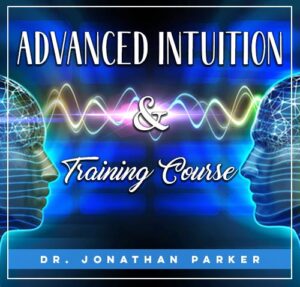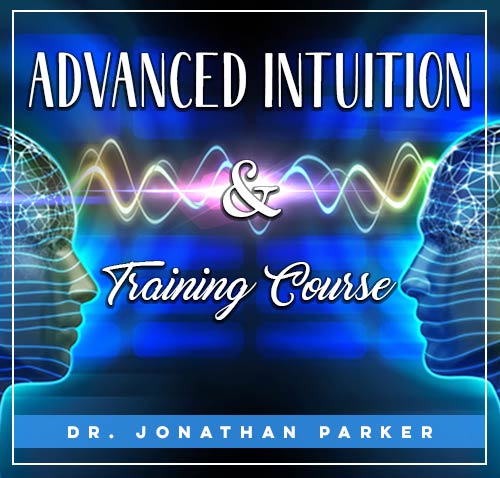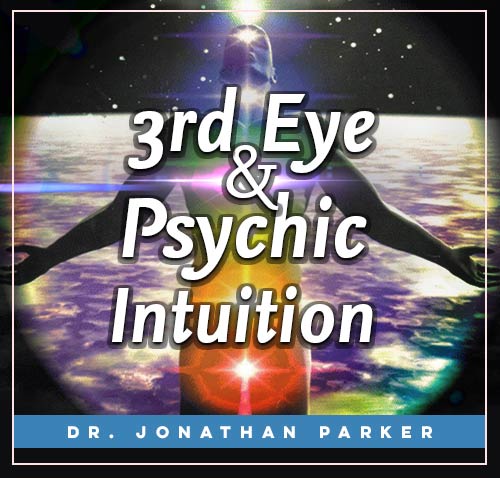Energetic Enigma: Exploring Secrets of Psychometry

Before diving in, please note: This post is for informational purposes only. If you’d like to know more about how we approach topics, feel free to check out our friendly Disclaimer Page.
Hey there, amazing readers! 🖐️ Just a quick note: yes, we know there are a lot of ads here. Trust us, we get it—it’s not the prettiest look, but they help us keep this blog alive and kicking. Those pesky little ads cover the costs of all the behind-the-scenes magic, from hosting and tech stuff to creating content we hope you’ll love.
We’re committed to delivering quality posts, and your support (even just sticking around despite the ads) means everything to us. So, bear with us, and thanks for helping us keep the good vibes rolling. Now, on to the fun stuff! 😉
TRANSLATE BUTTON AT THE END OF THE ARTICLE
Energetic Enigma: Exploring Secrets of Psychometry
Overview
Psychometry, an intriguing phenomenon that has fascinated people for centuries, involves the ability to gain information about an object or person simply by touching or holding it.
This unique skill is often referred to as "object reading" or "psychic touch." While it has been met with skepticism by some, there are numerous cases throughout history that suggest psychometry’s validity.
In this article, we will delve into the secrets of psychometry, exploring its science, the mysteries it can unravel, the role of energy, techniques for practicing it, and much more.
Understanding Psychometry: An Introduction to the Phenomenon
Psychometry can be understood as a form of extrasensory perception (ESP) that focuses on obtaining information through touch.
Just as a psychic might use clairvoyance to see or clairaudience to hear, psychometry allows individuals to tap into the energy imprints left on objects and gain insights from them.
This could include information about a person’s emotions, history, or even events associated with the item.
The Science Behind Psychometry: How Does It Work?
While the exact mechanisms behind psychometry still remain a topic of debate, there are several theories that attempt to explain its workings.
One theory suggests that everything is made up of energy, and objects retain energetic imprints from their surroundings and the people who have interacted with them.
Psychometrists are believed to be able to tap into these imprints and interpret the information contained within.
Another theory proposes that psychometry is a manifestation of the unconscious mind’s ability to access information beyond the limits of our regular senses.
It suggests that the mind can make intuitive connections based on subtle cues present in the energy imprints, allowing psychometrists to retrieve accurate insights.
Unraveling the Mysteries: What Can Psychometry Reveal?
Psychometry holds the potential to reveal a wealth of information about objects and individuals.
By holding an item, a psychometrist may be able to sense emotions, memories, or even events that have occurred in connection with that object.
For example, touching a wedding ring might evoke feelings of happiness and love, while holding an antique photograph could reveal glimpses of the past.
Psychometry can also provide insights into a person’s character traits or experiences.
By touching a personal belonging, a psychometrist may gain a sense of the owner’s personality, their joys, sorrows, and even their untold stories.
This ability to connect with the past and present through objects makes psychometry a powerful tool for uncovering hidden truths.
The Role of Energy in Psychometry: A Closer Look
Energy plays a crucial role in the practice of psychometry.
According to the theory behind this phenomenon, every object contains energy imprints that can be accessed by a psychometrist.
These imprints are believed to be left behind by the emotions, thoughts, and experiences of those who have interacted with the object.
Psychometrists often describe the experience of touching an object as tapping into a vibrational frequency.
They believe that each person and object emits unique energy signatures that can be sensed and interpreted.
By attuning themselves to these energetic frequencies, psychometrists can unravel the hidden information contained within the object.
Tools of the Trade: Techniques for Practicing Psychometry
Psychometry is a skill that can be developed with practice and focus.
Here are some techniques that can aid in honing psychometric abilities:
Meditation: Regular meditation helps to quiet the mind and enhance sensitivity to subtle energies, which can be beneficial for psychometry.
Grounding and Centering: Establishing a strong connection with the present moment and grounding oneself can create a receptive state for psychometric exploration.
Object Focus: By dedicating attention to an object and maintaining a relaxed state, psychometrists can increase their receptivity to its energetic imprints.
Symbolic Interpretation: Developing the ability to recognize and interpret symbols in the energetic impressions obtained can enhance the accuracy of psychometric readings.
Journaling: Keeping a journal of psychometric experiences can aid in tracking progress, identifying patterns, and refining interpretation skills.
From Jewelry to Manuscripts: Objects that Hold Energetic Traces
Psychometry can be practiced with a wide range of objects, as long as they have interacted with individuals and absorbed their energy.
Unlock your potential with the Advanced Intuition Training Course – start here.
Here are some examples of objects commonly used in psychometric readings:
Jewelry: Rings, necklaces, and bracelets often carry strong energetic imprints due to their close contact with the owner’s body.
Photographs: Images frozen in time can evoke powerful emotions and memories, making them ideal for psychometric exploration.
Clothing: Wearing apparel, especially those that have been worn for a significant period, can hold energetic imprints that reveal insights about the wearer.
Antiques and Artifacts: Objects with a rich history often carry energetic imprints from past events, making them intriguing subjects for psychometric readings.
Written Documents: Letters, diaries, and manuscripts can provide a direct connection to the thoughts and emotions of the individuals who wrote them.
Famous Examples: Notable Cases of Psychometry in Action
Throughout history, there have been numerous accounts of psychometry in action.
Here are a few famous examples that highlight the potential of this phenomenon:
Dorothy Allison: A well-known psychic, Allison gained recognition for her psychometric abilities.
She would hold personal belongings of missing individuals to gather information and assist in solving crimes.
Peter Hurkos: A Dutch psychic, Hurkos was celebrated for his psychometric readings.
His abilities were put to the test when he assisted in the investigation of the Boston Strangler murders in the 1960s.
Rosemary Brown: An English medium, Brown claimed to channel the spirits of famous composers.
Through psychometry, she would touch musical instruments and produce compositions that she attributed to these spirits.
Noreen Renier: Renier worked closely with law enforcement agencies, utilizing her psychometric skills to help solve cold cases.
She would hold objects related to the crimes to gather information about the perpetrators.
Skepticism vs. Belief: Debating the Validity of Psychometry
As with any paranormal phenomenon, psychometry has its fair share of skeptics.
Some argue that the information obtained through psychometry can be attributed to cold reading techniques or lucky guesses.
Skeptics often demand scientific evidence to substantiate the claims made by psychometrists.
On the other hand, believers point to the numerous cases where accurate and specific information has been obtained through psychometry.
They argue that the intricacies of these readings, including details that the psychometrist had no prior knowledge of, cannot be easily dismissed as mere chance.
The Ethical Considerations: Best Practices for Psychometry
When practicing psychometry, it is essential to consider ethical guidelines to ensure the well-being and privacy of individuals involved.
Here are some best practices for psychometrists:
Consent: Always seek explicit consent from the owner of an object before attempting a psychometric reading.
Boundaries: Respect personal privacy and avoid delving into sensitive or traumatic experiences unless specifically requested by the individual.
Confidentiality: Maintain strict confidentiality regarding the information obtained through psychometry, treating it with the same level of sensitivity as any other personal information.
Emotional Support: Offer empathy and support to individuals who may be emotionally affected by the information uncovered during a psychometric reading.
Continued Learning: Stay informed about ethical considerations and best practices in the field of psychometry, being open to ongoing education and growth.
Benefits Beyond Curiosity: Practical Applications of Psychometry
Psychometry is not limited to mere curiosity or entertainment.
It has practical applications that can be beneficial in various fields.
Here are some examples:
Historical Research: Psychometry can provide unique insights into the lives of historical figures through the analysis of their personal belongings.
Archaeology: By examining artifacts through psychometry, researchers may gain a deeper understanding of civilizations and cultures that have long been lost.
Therapeutic Practices: Psychometry can be utilized in therapy sessions to help individuals explore their past experiences and gain insights into their emotions and behaviors.
Criminal Investigations: Psychometry has been used in aiding criminal investigations, providing additional perspectives and potential leads in unsolved cases.
Personal Growth and Healing: Individuals can use psychometry to gain self-awareness, explore their own energetic imprints, and uncover hidden aspects of their lives.
Harnessing the Power of Psychometry: Tips for Developing Skills
For those interested in developing their psychometric abilities, here are some tips to help expand and refine the skill:
Practice Regularly: Like any skill, psychometry improves with practice.
Regularly engage in psychometric exercises to enhance sensitivity and interpretation skills.
Start with Familiar Objects: Begin practicing psychometry with objects that belong to friends or family members, as you may have prior knowledge or emotional connections that can aid in validation.
Trust Your Intuition: Pay attention to the intuitive impressions that arise during psychometric readings, as these can often provide valuable insights.
Seek Feedback: Collaborate with others who have an interest in psychometry to exchange experiences, validate readings, and receive constructive feedback.
Personal Development: Engage in personal growth practices such as meditation, energy work, and emotional healing to enhance your receptivity and connection to energetic imprints.
Conclusion
Psychometry, the ability to gain information through touch, offers a fascinating glimpse into the mysteries of the energetic world.
While the scientific mechanisms underlying psychometry are still subject to debate, the numerous accounts of accurate readings throughout history cannot be easily dismissed.
Whether used for historical research, personal growth, or criminal investigations, psychometry holds the potential to unlock hidden truths and deepen our understanding of the world around us.
By exploring the secrets of psychometry and developing our own skills, we embark on a journey of discovery that transcends the limitations of our regular senses.

The Enlightenment Journey is a remarkable collection of writings authored by a distinguished group of experts in the fields of spirituality, new age, and esoteric knowledge.
This anthology features a diverse assembly of well-experienced authors who bring their profound insights and credible perspectives to the forefront.
Each contributor possesses a wealth of knowledge and wisdom, making them authorities in their respective domains.
Together, they offer readers a transformative journey into the realms of spiritual growth, self-discovery, and esoteric enlightenment.
The Enlightenment Journey is a testament to the collective expertise of these luminaries, providing readers with a rich tapestry of ideas and information to illuminate their spiritual path.
Our Diverse Expertise 🌟
While our primary focus is on spirituality and esotericism, we are equally passionate about exploring a wide range of other topics and niches 🌍📚. Our experienced team is dedicated to delivering high-quality, informative content across various subjects ✨.
To ensure we provide the most accurate and valuable insights, we collaborate with trusted experts in their respective domains 🧑🏫👩🏫. This allows us to offer well-rounded perspectives and knowledge to our readers.
Our blog originally focused on spirituality and metaphysics, but we’ve since expanded to cover a wide range of niches. Don’t worry—we continue to publish a lot of articles on spirituality! Frequently visit our blog to explore our diverse content and stay tuned for more insightful reads.








